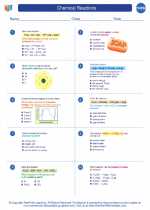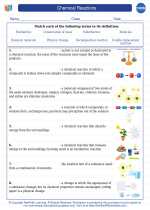Introduction to Reproductive Physiology
Reproductive physiology is the branch of biology that focuses on the processes and functions of the male and female reproductive systems. It encompasses the mechanisms of gametogenesis, fertilization, and embryogenesis, as well as the regulation of reproductive hormones.
Male Reproductive Physiology
The male reproductive system is responsible for producing and delivering sperm. It includes organs such as the testes, epididymis, vas deferens, seminal vesicles, prostate gland, and the penis. The process of spermatogenesis, controlled by the hormones FSH and LH, occurs in the seminiferous tubules of the testes. Sperm are then stored and matured in the epididymis before being ejaculated during sexual intercourse.
Female Reproductive Physiology
The female reproductive system is responsible for producing eggs, providing a suitable environment for fertilization and embryonic development, and supporting the developing fetus. It includes organs such as the ovaries, fallopian tubes, uterus, and vagina. The menstrual cycle, regulated by hormones such as estrogen and progesterone, controls the release of eggs from the ovaries and the preparation of the uterus for potential pregnancy.
Reproductive Hormones
Hormones play a crucial role in regulating the reproductive processes in both males and females. Key hormones involved in reproductive physiology include follicle-stimulating hormone (FSH), luteinizing hormone (LH), estrogen, and progesterone. These hormones are secreted by the pituitary gland and the ovaries or testes, and they control the development and function of the reproductive organs and the timing of reproductive events.
Key Concepts in Reproductive Physiology
- Gametogenesis: The process of sperm and egg production through meiosis.
- Fertilization: The fusion of a sperm cell with an egg cell to form a zygote.
- Menstrual Cycle: The monthly series of changes in the female reproductive system that prepares the body for pregnancy.
- Hormonal Regulation: The control of reproductive processes by hormones secreted by the endocrine system.
Common Topics in Reproductive Physiology Studies
When studying reproductive physiology, students often encounter the following topics:
- Male and female reproductive anatomy
- Gametogenesis and meiosis
- Hormonal regulation of the reproductive system
- Menstrual cycle and its phases
- Fertilization and embryonic development
Study Tips for Reproductive Physiology
To excel in reproductive physiology, consider the following study tips:
- Visual aids: Use diagrams and models to understand the anatomy and processes of the male and female reproductive systems.
- Practice questions: Test your knowledge with practice questions on gametogenesis, hormonal regulation, and the menstrual cycle.
- Concept mapping: Create concept maps to visualize the relationships between hormones, reproductive organs, and physiological processes.
- Application of knowledge: Relate reproductive physiology to real-life scenarios, such as fertility treatments and reproductive disorders, to deepen your understanding.
- Collaborative learning: Discuss and explain complex concepts with peers to reinforce your understanding of reproductive physiology.
[Reproductive Physiology] Related Worksheets and Study Guides:
.◂Chemistry Worksheets and Study Guides High School. Chemical Reactions

 Worksheet/Answer key
Worksheet/Answer key
 Worksheet/Answer key
Worksheet/Answer key
 Worksheet/Answer key
Worksheet/Answer key
 Worksheet/Answer key
Worksheet/Answer key
 Worksheet/Answer key
Worksheet/Answer key
 Vocabulary/Answer key
Vocabulary/Answer key
 Vocabulary/Answer key
Vocabulary/Answer key
 Vocabulary/Answer key
Vocabulary/Answer key
